Download our Comprehensive AI Playbook for the Mid-Market:
Playbook: Eliminating Breach Risks — 2025 Edition for midmarket organizations. Download to learn more

STEPS TO COMPLIANCE
We’ll lead the way to help you get — and remain — compliant




Risk analysis
An enterprise security risk analysis is a crucial step to understanding your exposures and vulnerabilities to threats. Pondurance uses its proprietary risk-based approach in order to distinguish the highest risk issues that require urgent attention
Download risk analysis datasheet »
Design for cyber resilience
A good defense is just the beginning. Today, cyber resilience is dependent on effective threat detection, investigation and response (TDIR). The Pondurance MDR with our 24/7 U.S.-based SOC is the perfect answer for mid-market organizations
Forensics-grade incident response
Security incidents will happen, however, no matter how well defended you are. The Pondurance DFIR team is trusted (and on panel) by over 30 cyber insurers and will ensure timely and accurate remediation and root cause analysis
Address and test exposures
With the risk-based analysis as a template, Pondurance will provide you with and help in implementing a remediation action plan. We can then test your defenses periodically with penetration tests and red team exercises
Download penetration testing datasheet »
ENSURE COMPLIANCE
Simplify compliance and strengthen cybersecurity
Reduce breach risks and comply with cybersecurity regulations


DEMONSTRATE COMPLIANCE
Cut through the complexity of compliance to better manage risk
Keeping up with cybersecurity and privacy regulations is hard enough. Staying compliant while actually improving security? That’s even harder. With overlapping federal and state laws, growing enforcement, and evolving standards like HIPAA, NIST, and CMMC, it’s easy to feel buried in red tape.
Pondurance ‘s cyber advisors and consultants have deep experience in understanding and helping our customers comply with all of the regulations to which they are subject. From HIPAA/HITECH for health information, to providing general NIST Cybersecurity Framework (CSF) compliance for any organization with PII under the jurisdiction of the FTC, to government contractors requiring CMMC 2.0 compliance, to financial institutions subject to NYDFS and SEC security compliance regulations, Pondurance can provide services to evaluate security risks, determinate proper remediation actions, and identify compliance gaps with the complex web of federal and state laws and regulators,
Challenges & Pain Points
-
Hard to find a trusted, efficient compliance advisor
-
Struggle to keep up with ever-changing regulatory landscape with overlapping requirements across federal and state laws
-
Compliance for compliance sake is a missed opportunity to add value and is often viewed as expensive overhead
-
Logistical complexities — such as dispersed teams, endpoints distributed across locations and networks, manual processes, legacy tech, and new digitization initiatives — constantly add new challenges
-
Lack internal expertise to plan, implement, and maintain compliance

How Pondurance Advisory Services Can Help
-
Strategic cyber leadership with vCISO and incident response services
-
Proprietary risk-based methodology builds resilience and trust with stakeholders
-
Access to world-class DFIR aligned with your cyber insurer and leading privacy law firms
-
Award-winning TDIR platform for MDR, SIEM & ASM to rapidly detect and disrupt threats
-
Reduce costs with a right-sized cybersecurity strategy
-
Build a scalable, audit-ready compliance program
REGULATIONS
Navigate your unique and always changing regulatory landscape
At Pondurance, we incorporate a risk-based methodology into our compliance professional services. This will ensure that you prioritize actions that both ensure regulatory compliance while also taking steps to effectively better protect regulated data from access by malicious actors. Most organizations that operate in the U.S. are subject to both federal and state laws and regulations related to the protection of regulated data such as PII and PHI. These cybersecurity, privacy and data breach laws form a complex myriad of sometimes conflicting requirements that require compliance by your organization. The following is an non-exhaustive list of the most common of these regulations.

HIPAA/HITECH
HIPAA, the Health Insurance Portability and accountability Act of 1996, combined with HITECH, the Health Information Technology for Economic and Clinical Health Act of 2009, provide requirements for any and all organizations including covered entities and business associates that acquire, store, transmit, or otherwise work with protected health information (PHI) of their patients to protect such data. The specific requirements for such protection are laid out in the HIPAA Security Rule, HIPAA Privacy Rule, and the HIPAA Breach Notification Rule as written for the U.S. Department of Health and Human Services (HHS) Office for Civil Rights (OCR). These rules can be enforced both by OCR themselves as well as by state Attorneys General (AGs) who can assess fines, penalties, and corrective action plans.
Download HIPAA/HITECH info sheet

NIST
The U.S. National Institute of Standards and Technology (NIST) developed the NIST Cybersecurity Framework (CSF) to help organizations manage and reduce cybersecurity risks. It provides a structured approach to risk management by focusing on five core functions: identify, protect, detect, respond and recover. In the latest version CSF 2.0, it has further added a new function to focus on security governance. The CSF aligns with security requirements of well known and widely accepted BIST cybersecurity standards suc as SP 800-171 Rev. 2 and SP 800-172. The CSF uses a risk-based approach and Pondurance uses it as a foundation for its proprietary risk-based methodology and MyCyberScorecard software risk-scoring tool.

CMMC 2.0
CMMC 2.0 is a revised version of the Cybersecurity Maturity Model Certification program designed to maintain a high level of quality of cybersecurity in the U.S. Department of Defense (DOD) supply chain. It streamlines requirements and aligns them with the NIST CSF framework. The intent of CMMC 2.0 is to protect sensitive information, improve cybersecurity resilience, and ensure accountability by all members of the DOD supply chain. CMMC 2.0 is mandatory for all DoD contractors and subcontractors who handle FCI or CUI
Download CMMC info sheet

SEC breach notification provision
The U.S. Securities and Exchange Commission (SEC) in 2024 adopted amendments to Regulations S-P requiring organizations subject to their authority to notify individuals affected by certain types of data breaches. Specifically they stated a requirement for financial firms to notify individuals whose sensitive customer information was, or is reasonably likely to have been, accessed or used without authorization within 30 days of becoming aware that unauthorized access to or use of such customer information has or is reasonably likely to have occurred.
State Privacy & Breach Notification Laws
Most US states and several territories have passed laws requiring organizations that handle personal, private data of their citizens to take steps to provide reasonable security for this data, among other provisions, and to notify these individuals if their personal data was exposed in a data breach. These laws engender significant complexity for organizations that are subject to more than one jurisdiction because their definitions, rules and requirements are often inconsistent and in some cases conflicting. Additionally, organizations will have to comply with both the state regulations as well as any federal regulations regarding security, privacy and breach notification of personal data of their consumers.

PCI-DSS
PCI-DSS is the Payment Card Industry Data Security Standard, a set of security rules and best practices that organizations must follow to protect cardholder data. The purpose of this standard is to reduce fraud and data breaches. This standard is enforced by a non-governmental body called the Payment Card Industry Security Standards Council (PCI SSC).

FTC Section 5 authority
The U.S. Federal Trade Commission (FTC) has authority via Section 5 to enforce requirements that organizations provide “reasonable security” for the personal data of their consumers. In 2022, The FTC provided notice that they would carry out additional scrutiny for data breaches. Per this notice, they stated that “regardless of whether a breach notification law applies, a breached entity that fails to disclose information to help parties mitigate reasonable and foreseeable harm may violate Section 5 of the FTC Act.”
PONDURANCE COMPLIANCE BENEFITS
Peace of mind in your cybersecurity compliance

Veteran cyber advisory team
Our advisory and compliance services team have experience in assisting organizations with security, privacy and data breach compliance obligations that span federal and state laws and provide documentation and proof to numerous regulatory and enforcement bodies including the FTC, SEC, HHS/OCR and state AGs
REAL CUSTOMER STORIES
“Pondurance provided an all encompassing MDR solution in a cost effective package that gives us peace of mind as a true extension of our security staff.”
— Manager of IT Operations and Security, Insurance

REAL CUSTOMER STORIES
“For a midsized organization, Pondurance MDR services play a crucial role in bolstering the capacity of security teams.”
— Manager, IT Security and Risk Management, Retail

REAL CUSTOMER STORIES
“They immediately proved their value and earned our trust due to their immense expertise and guidance throughout the entire process.”
— Steve Long, CEO, Hancock Health

STILL HAVE QUESTIONS?
Check out these Frequently Asked Questions
.png)
Frequently asked questions
WHY PONDURANCE
Pondurance is the only MDR solution built to eliminate breach risks

Consumer-class user portal
Track tickets, view real time metrics, and collaborate with SOC analysts through a single, streamlined and intuitive user interface. With a glance at your dashboard, you’ll see the most relevant information about your networks.

Rapid implementation
Get up and running fast. Pondurance integrates with your existing security stack, minimizing downtime and disruption. We can meet you where you are in your cybersecurity journey, and adapt or scale our services as your needs mature in the future.

Visibility across entire attack surface
Get 360-degree visibility in our consumer-grade user portal. Ingest data from your entire attack surface — endpoints, network, identity, apps, cloud, and IoT — and view it in one centralized dashboard.

Access to trusted advisors
Our trusted security advisors become an extension of your team, rounding out any gaps in your internal security resources. From a virtual CISO, to our expert analysts and threat hunters, to certified consultants for risk assessments, compliance audits, and more, we work to provide everything and everybody you may need to eliminate breach risks and ensure cybersecurity and data privacy compliance.

Proprietary risk analytics
Cut through noise to surface the highest-risk threats first. As a modern MDR solution, Pondurance correlates telemetry across all potential threat entry points and incorporates world-class threat intelligence to better validate and contextualize alerts. Our proprietary Pondurance Exposure Index™ provides continuous threat exposure management (CTEM).

Integrate with existing infrastructure
We believe you shouldn't have to rip out tools and technologies you've already invested in and are happy with. The cloud-native Pondurance Platform integrates any existing EDR tools you have, and ingests logs from hundreds of existing network, identity, cloud, app and IoT systems. The result is rapid and easy implementation — without creating security gaps or overlapping capabilities.



